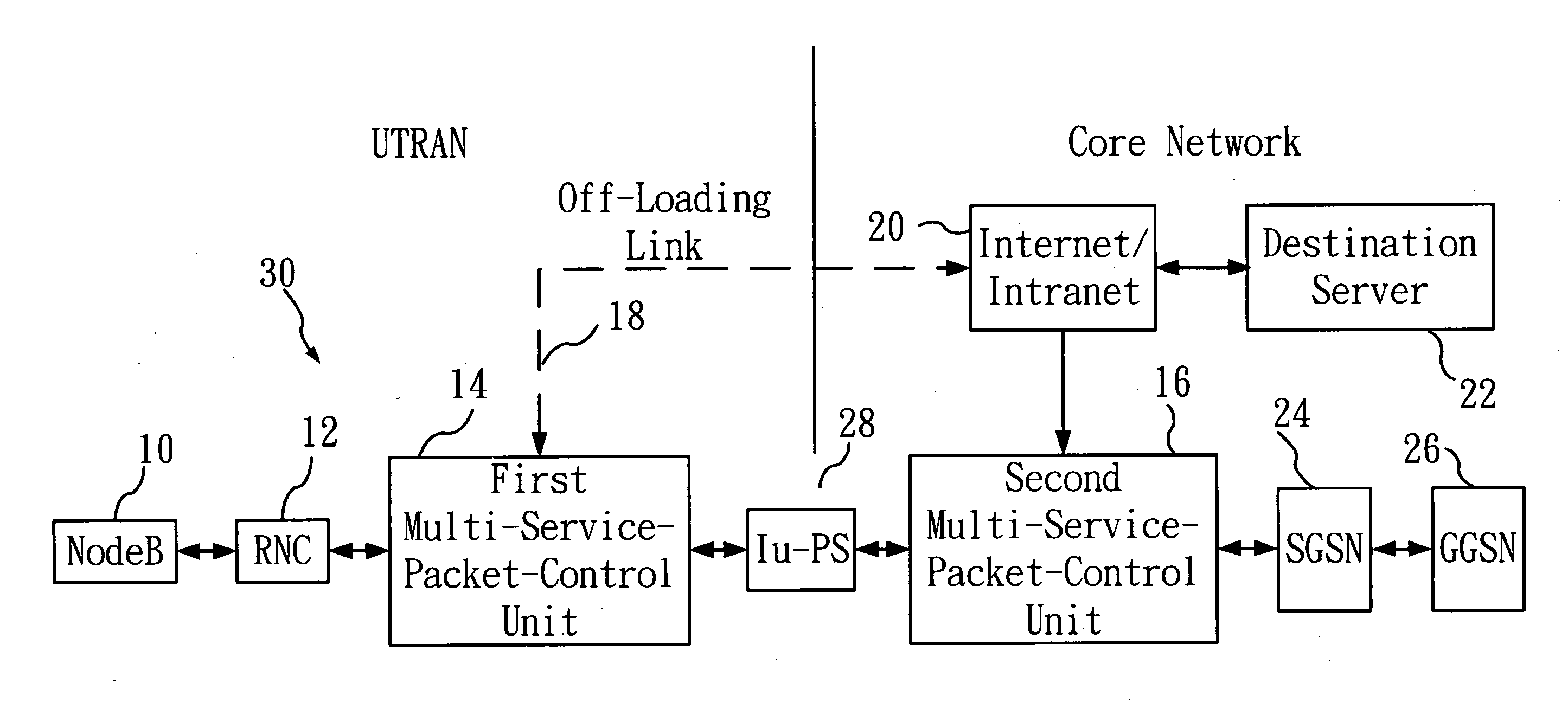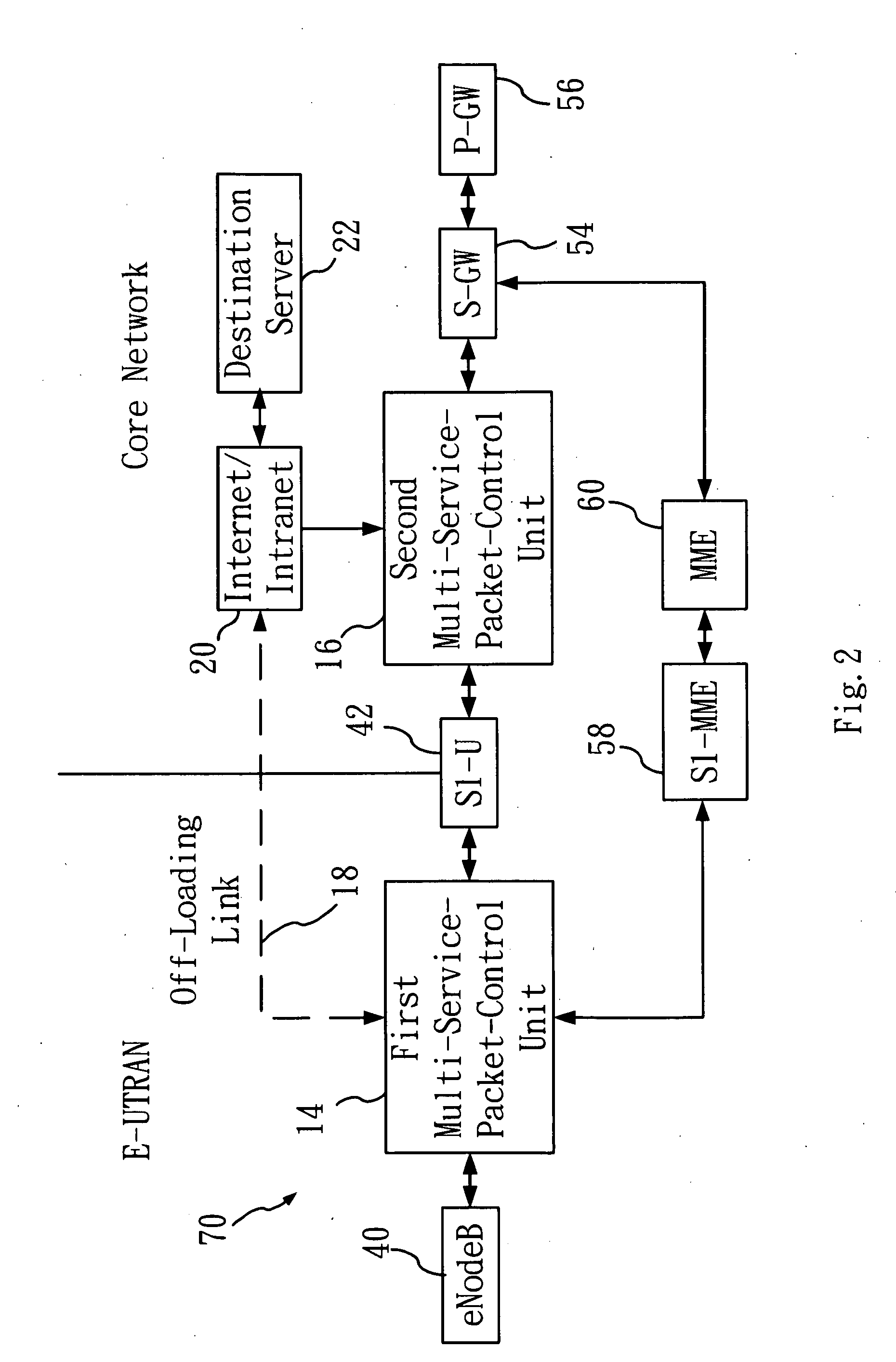Telecommunication network broadband off-loading system and method
a technology of telecommunication network and broadband, applied in the direction of network traffic/resource management, wireless commuication services, electrical equipment, etc., can solve the problems of packet transmission not providing adequate means, s1 protocol interface bandwidth is insufficient for certain, and the improvement of signal transmission technology is restricted to a very limited advancement in hardware. , to achieve the effect of reducing the flux of packet transmission flow, reducing the problem of insufficient bandwidth, and reducing the problem of insufficien
- Summary
- Abstract
- Description
- Claims
- Application Information
AI Technical Summary
Benefits of technology
Problems solved by technology
Method used
Image
Examples
first embodiment
[0020]Refer to FIG. 1 for a schematic diagram of a framework of a telecommunication network broadband off-loading system according to the present invention. As shown in FIG. 1, at least a base station (Node B) 10 is provided, and that is utilized to send out packets (at least a packet) (not shown). The packets are transmitted to at least a radio network controller 12 connected to the base station (Node B) 10. The radio network controller 12 is used to receive and recombine the packets sent from the base station (Node B) 10, and transmit the recombined packets to a first multi-service-packet-control unit 14 connected thereto; a portion of the packets thus transmitted are offset and off-loaded onto an off-loading link 18 via the first multi-service-packet-control unit 14, and are subsequently transmitted to an Internet / Intranet 20 through the off-loading link 18; and then the packets thus transmitted are converged and received by a second multi-service-packet-control unit 16 connected...
second embodiment
[0024]Refer to FIG. 2 for a schematic diagram of a framework of a telecommunication network broadband off-loading system according to the present invention. As shown in FIG. 2, a System Architecture Evolution (SAE) 70 includes an Evolved UMTS Terrestrial Radio Access Network (E-UTRAN) and a Core Network. Wherein, the Evolved UMTS Terrestrial Radio Access Network (E-UTRAN) includes at least a base station (eNode B) 40, and a first multi-service-packet-control unit 14; and the Core Network includes an Internet / Intranet 20, a second multi-service-packet-control unit 16, a destination server 22, a Serving Gateway (S-GW) 54, a Packet Data Network Gateway (P-GW) 56, and a Mobility Management Entity (MME) 60. In this framework, a base station (eNode B) 40 sends out packets (at least a packet) (not shown), that are received and recombined by the first multi-service-packet-control unit 14, then the packets are off-loaded onto an off-loading link 18, subsequently, they are transmitted to an I...
PUM
 Login to View More
Login to View More Abstract
Description
Claims
Application Information
 Login to View More
Login to View More - R&D
- Intellectual Property
- Life Sciences
- Materials
- Tech Scout
- Unparalleled Data Quality
- Higher Quality Content
- 60% Fewer Hallucinations
Browse by: Latest US Patents, China's latest patents, Technical Efficacy Thesaurus, Application Domain, Technology Topic, Popular Technical Reports.
© 2025 PatSnap. All rights reserved.Legal|Privacy policy|Modern Slavery Act Transparency Statement|Sitemap|About US| Contact US: help@patsnap.com



